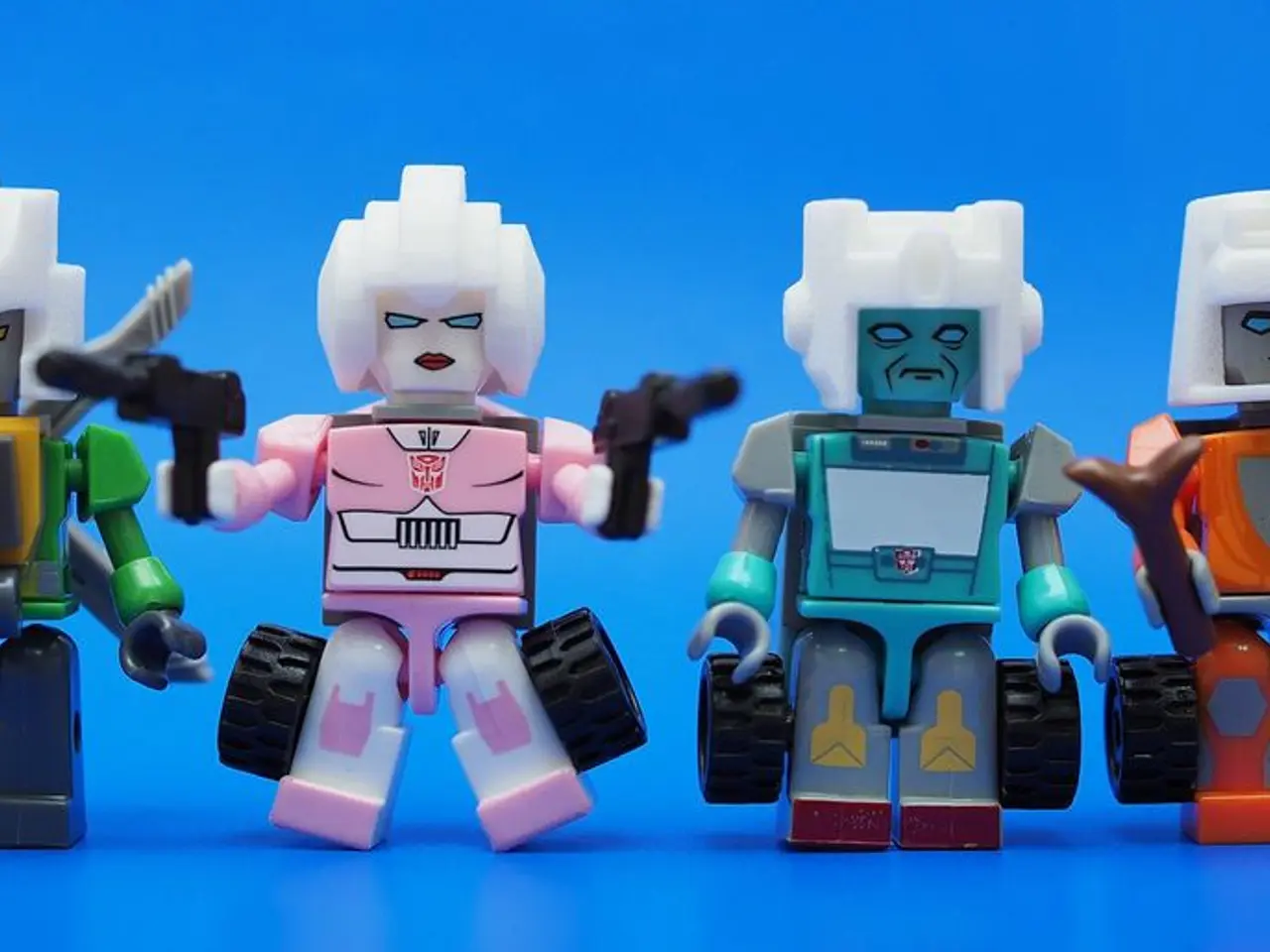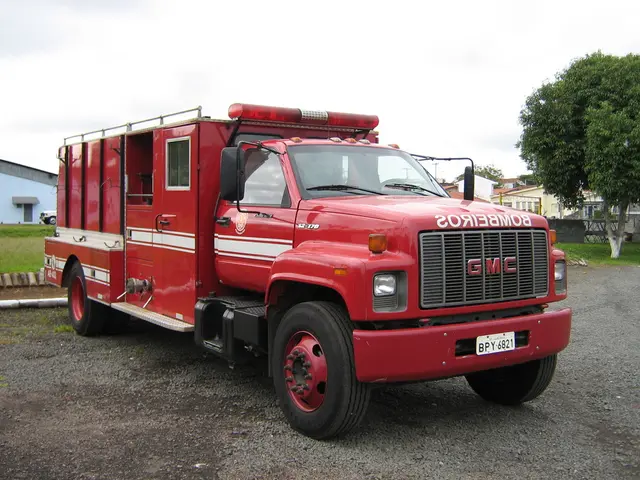Robot Mobility Revolution: Marc Raibert's Approach to Animal-Like Robot Movement according to IEEE Report
## Latest Advancements in Hydraulic Technology for Robot Movement
In the realm of robotics, hydraulic technology has emerged as a powerful force, providing robots with the ability to handle heavy payloads with precision and control. This has made it an ideal choice for applications requiring significant strength, such as disaster response and high-risk operations.
One notable example is the ARMstrong Dex humanoid robot from the Korea Atomic Energy Research Institute, which utilizes hydraulic power to support its heavy-lift capabilities, managing up to 200 kilograms (about 441 pounds) combined[1].
Innovations like the Beltdraulic technology from RISE Robotics are aimed at reducing inefficiencies associated with traditional hydraulic systems, offering power without the drawbacks of hydraulic fluid management[2].
However, electric alternatives are also gaining popularity due to their efficiency, lower maintenance, and smaller size. Electric motors, including servos and stepper motors, are ideal for precision tasks and are becoming more powerful with advancements in materials and design[3].
Gallium Nitride (GaN) technology is being used in electric devices to enhance efficiency and speed, offering faster switching times and higher power density compared to traditional silicon-based devices[2]. Electric motors, such as the new AW Stepper Motors, are designed to withstand harsh environments, including dust, moisture, and grease, making them versatile for various robotics applications[2].
When comparing the two technologies, hydraulic systems excel in applications requiring high power and precision, while electric alternatives offer efficiency and versatility. A table outlining the advantages and disadvantages of each technology can be found below:
| **Technology** | **Advantages** | **Disadvantages** | |---------------|----------------|-------------------| | **Hydraulic** | High power density, suitable for heavy payloads and precise control in complex environments. | Requires hydraulic fluid management, can be less efficient compared to electric systems. | | **Electric** | High efficiency, low maintenance, compact size, and suitable for precision tasks. | Generally less powerful than hydraulic systems for heavy-duty applications. |
As the industry continues to evolve, the future of robotics likely lies in hybridization-combining traditional control methods with modern machine learning techniques. Boston Dynamics, a leading company in the field, is at the forefront of this development, with its AI Institute aiming to bridge the gap between human athletic intelligence and robotics.
The Institute's goal is to create robots that can watch a human perform a task, comprehend the actions, and reproduce them independently, a form of on-the-job training for mechanical beings[4]. This vision extends beyond traditional robotics programming to create machines that can learn through observation and imitation[5].
One intriguing project involves teaching robots to "watch, understand, and do," such as learning to segment actions meaningfully for tasks like bicycle repair[6]. The art of making robots move naturally lies at the intersection of sophisticated hardware and predictive algorithms[7].
The study of animal movement has profoundly influenced the evolution of robotic design, with various animals' locomotion patterns analyzed for insights[8]. The integration of higher-level cognitive functions remains a crucial challenge in creating robots that can truly understand and adapt to their environment[9].
The path forward requires a delicate balance between ambitious goals and practical progress, with Raibert advocating for a "stepping stones to moonshots" approach[10]. The marriage of athletic and cognitive intelligence represents the next frontier in robotics, with Boston Dynamics having established benchmarks for robot mobility and physical capability.
The intersection of robotics and dance represents one of the most fascinating frontiers in human-machine interaction, with the goal being to create new forms of artistic expression that blend the precision of machines with the creativity of human movement[11]. Operating under uncertainty and lack of specification represents a core aspect of true intelligence, as robots must develop the ability to understand and adapt to new situations without complete information[12].
Modern hydraulic systems, when properly engineered, can deliver exceptional power density and control precision compared to electric alternatives. The misconception that hydraulics are inherently messy or prone to leakage overlooks the technology's potential benefits. An integrated hydraulic power supply, developed by Boston Dynamics, delivers 5kW of power in a compact unit roughly the size of a football and weighing 5kg[13].
Robots require compliance or springiness in design to achieve fluid motion, similar to natural elasticity in joints and tissues. The challenge of creating robots that can truly understand and adapt to their environment is a complex one, but the advancements in hydraulic technology are paving the way for a future where robots can handle heavy loads with precision and grace.
[1] https://www.kahri.re.kr/en/news/view.jsp?seq=310 [2] https://www.riserobotics.com/beltdraulic [3] https://www.robotics.org/technology-and-standards/robotics-technology-magazine/robotics-technology-magazine-archive/2013/march-2013/electric-motors-for-robots [4] https://www.bostondynamics.com/ai-institute [5] https://www.bostondynamics.com/blog/ai-institute [6] https://www.bostondynamics.com/blog/teaching-robots-to-watch-understand-and-do [7] https://www.bostondynamics.com/blog/the-art-of-making-robots-move-naturally [8] https://www.bostondynamics.com/blog/study-of-animal-movement-influences-robot-design [9] https://www.bostondynamics.com/blog/integration-of-higher-level-cognitive-functions [10] https://www.bostondynamics.com/blog/path-forward-requires-delicate-balance [11] https://www.bostondynamics.com/blog/robotics-and-dance-fascinating-frontier-in-human-machine-interaction [12] https://www.bostondynamics.com/blog/challenge-of-operating-under-uncertainty-and-lack-of-specification [13] https://www.bostondynamics.com/blog/integrated-hydraulic-power-supply-delivers-5kw-of-power
Artificial intelligence, a significant component of science and technology, could potentially enhance the performance of robots with hydraulic power systems. For instance, machine learning techniques could enable robots to learn from human actions and reproduce them autonomously, like the robots developed by Boston Dynamics' AI Institute.
In the future, a harmonious blend of traditional hydraulic technology and modern artificial intelligence could revolutionize robotics, creating machines that can adapt to their environment and handle heavy payloads with precision, as well as leverage the advantages offered by electric alternatives, such as efficiency and versatility.




